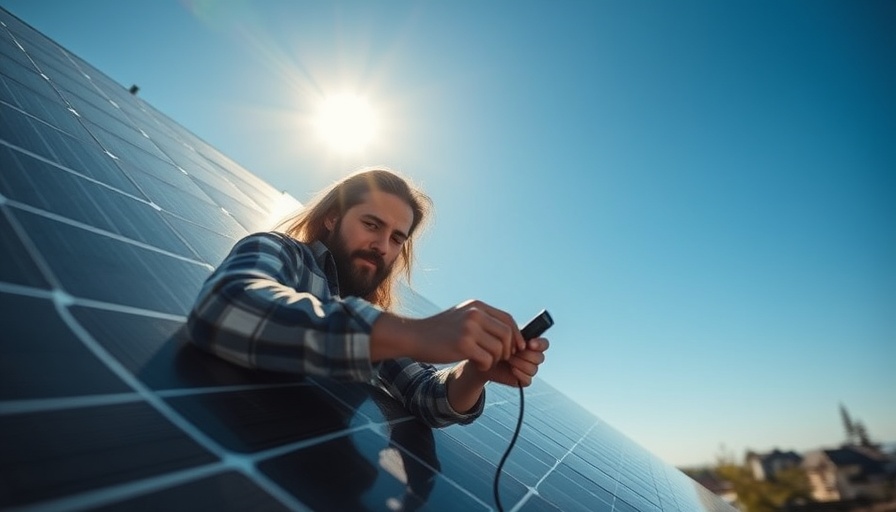
Understanding Off-Grid Solar Systems
Now more than ever, the transition to solar energy is becoming an accessible and appealing option for homeowners and DIY enthusiasts alike. With greater advancements in technology, building your own off-grid solar system can not only save money but also promote sustainable living. Whether it’s for your cabin, van, or as an emergency backup, a small solar setup is much more manageable than a comprehensive rooftop installation.
The Case for Going Off-Grid
Choosing an off-grid solar system means embracing independence from traditional energy suppliers. This choice promotes self-sufficiency, ensuring your energy usage is sustainable. Off-grid systems utilize renewable resources, significantly reducing your carbon footprint. For many, this is more than just a financial decision; it's a lifestyle choice that reinforces a commitment to environmental stewardship.
The Technology Behind Your System
When considering how to build an off-grid solar system, understanding the components is crucial. A typical system includes solar panels, an inverter, and batteries, along with a charge controller to manage the energy flow. New technologies such as lithium batteries and smart inverters allow for greater efficiency and reliability. By selecting a pre-configured kit or modular components, beginners can confidently create a solar solution tailored to their needs.
Planning Your Solar Adventure
To start designing your solar power system, first assess your energy needs. Calculate what appliances you plan to power, and determine how much energy you use daily. This is where creativity meets calculation. For example, using energy-efficient appliances can significantly reduce the overall size of your solar system. Implementing practical insights here ensures that your setup won’t only work but will thrive.
Building Your System: Equipment and Tools
Before diving into installation, gather the necessary equipment. Essential tools include a wire stripper, crimping tool, and basic hand tools like screwdrivers and wrenches. You'll also need:
- Solar Panels: The heart of any solar system, generating electricity from sunlight.
- Battery: Needed to store energy for use when the sun isn’t shining.
- Inverter: Transforms DC power into usable AC power.
- Charge Controller: Manages the flow of energy to prevent battery overcharging.
Safety and Regulations: What You Need to Know
While it’s tempting to dive into DIY solar projects, always prioritize safety and compliance with local regulations. Most areas require permits and inspections before a system can be connected to the grid. In some places, simplified plug-and-play systems are available for those who want the ease without the extensive legislative hurdles. This means that every backyard can become a renewable energy hub, providing cleaner energy for years to come.
Future Trends in Renewable Energy
As global awareness around climate change and sustainability grows, advancements in solar technology are leading to exciting developments. Community solar projects and grid-tied systems are emerging as attractive alternatives, giving homeowners opportunities to engage with renewable energy even when off-grid isn’t feasible. This represents a holistic shift toward an eco-friendly living reality – one that not only empowers individuals but also reshapes entire communities.
In conclusion, building your own off-grid solar system is an attainable objective for urban and suburban homeowners looking to contribute to environmental sustainability. It’s a compelling journey into renewable resources, and each step you take helps in reducing your carbon footprint while embracing a lifestyle that values the planet. If you're inspired to start your own solar project, consider exploring local resources on solar equipment and sustainable practices. Embrace this chance to invest in not just your home, but also our Earth—a decision that will resonate for generations. Add Row
Add Row  Add
Add 




 Add Row
Add Row  Add
Add 

Write A Comment